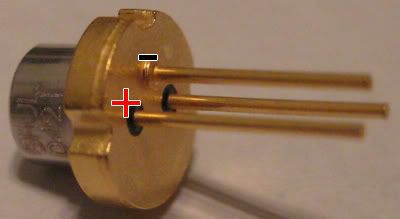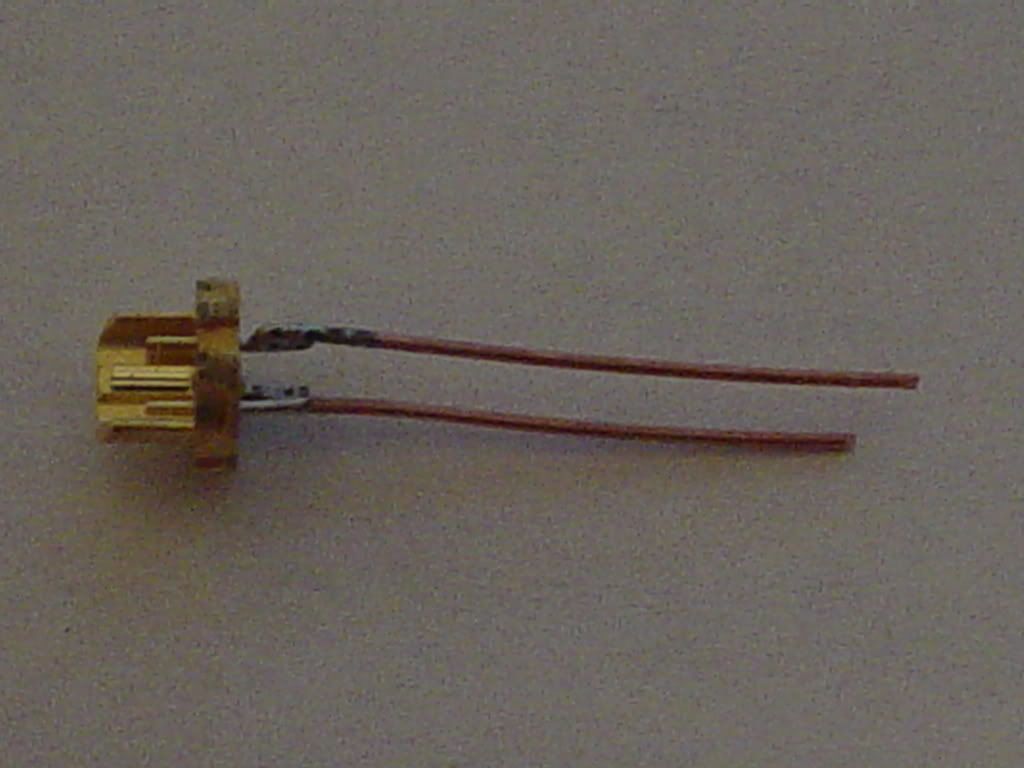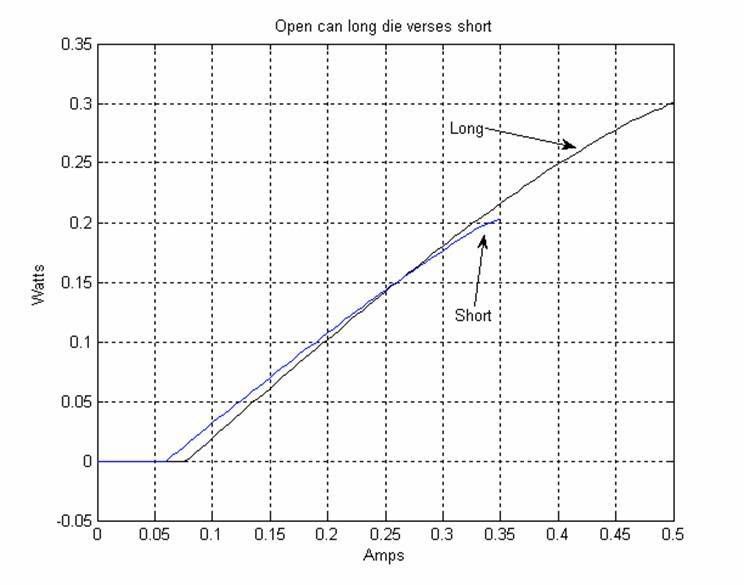
Welcome to Laser Pointer Forums - discuss green laser pointers, blue laser pointers, and all types of lasers
How to Register on LPF | LPF Donations
Navigation
Install the app
How to install the app on iOS
Follow along with the video below to see how to install our site as a web app on your home screen.
Note: This feature may not be available in some browsers.
More options

You are using an out of date browser. It may not display this or other websites correctly.
You should upgrade or use an alternative browser.
You should upgrade or use an alternative browser.
DIY Homemade laser diode driver
- Thread starter Daedal
- Start date
- Status
- Not open for further replies.


- Joined
- Sep 22, 2007
- Messages
- 169
- Points
- 18
I have a question. I just finished my first blu ray and am very impressed with it except for the brightness. at first it was quite bright with a current reading of about 40 ma. Now (about an hour later) I am getting about 38 ma but it seems much weaker. can this small change really affect the output that much? is it safe to up the current to around 45 ma or so?
rog8811
0
- Joined
- Jul 24, 2007
- Messages
- 2,749
- Points
- 0
With a 100ohm multiturn pot it is amazing just how little you have to turn it to raise the ma and get a noticably brighter output, then it reaches a plateaux (the knee mentioned by people who have done a graph) where if you turn on more ma's there is no increase in output.I am getting about 38 ma but it seems much weaker. can this small change really affect the output that much? is it safe to up the current to around 45 ma or so?
If you get to that stage turn it down again, the extra ma's will be turned into heat....if that all makes sense :-/
Regards rog8811
- Joined
- Sep 22, 2007
- Messages
- 169
- Points
- 18
That makes perfect sense, thanks. I was cheap when i was getting parts and they were sold out of all the small 100 ohm pots so i just went with a 1k or 10k pot (don't remember, but it doesn't matter, its in parallel with 30 ohms) and its not a multiturn so i have about 40ma or 100ma. anyway, i will make sure to get a multiturn one. thanks again.
- Joined
- May 4, 2008
- Messages
- 19
- Points
- 0
Hi Daedal and friends,
I'm very new to lasers in general and I have some questions about the driver I made.
This was a very good tutorial by the way and it really helped me figure out how to build diode drivers better. Thank you. Below (I hope) is a schematic I made up of the setup on my breadboard. These are all new parts and as far as I know the circuit is working ok.
My problem is: The LED lights up, but my 25 ohm pot does nothing when I turn it. As far as I can notice, it doesn't dim the light at all . :-/
Can you notice anything wrong with the way I set up my breadboard, or is the 25ohm pot not enough resistance for the circuit? What do you think I could do to get it working?
Thanks.
(Let me know if this is the wrong place to post this. I just joined this forum today. :-?)
I'm very new to lasers in general and I have some questions about the driver I made.
This was a very good tutorial by the way and it really helped me figure out how to build diode drivers better. Thank you. Below (I hope) is a schematic I made up of the setup on my breadboard. These are all new parts and as far as I know the circuit is working ok.
My problem is: The LED lights up, but my 25 ohm pot does nothing when I turn it. As far as I can notice, it doesn't dim the light at all . :-/
Can you notice anything wrong with the way I set up my breadboard, or is the 25ohm pot not enough resistance for the circuit? What do you think I could do to get it working?
Thanks.
(Let me know if this is the wrong place to post this. I just joined this forum today. :-?)
Attachments
Welcome to the forum. 
The LED doesn't turn off because it doesn't need a lot of current to work.
What I mean is that even with the pot set to its maximum resistance (25 ohms) it still lets through 50mA which is more than enough to light up your LED. If you lower the resistance on your pot and let more current through you'll probably blow the LED.
The LED doesn't turn off because it doesn't need a lot of current to work.
What I mean is that even with the pot set to its maximum resistance (25 ohms) it still lets through 50mA which is more than enough to light up your LED. If you lower the resistance on your pot and let more current through you'll probably blow the LED.
Hi folks.
This is my PCB version of this drive (image above)
I opend a post with more pictues and a PDF to print and do yourself a PCB
http://www.laserpointerforums.com/forums/YaBB.pl?num=1209830634

This is my PCB version of this drive (image above)
I opend a post with more pictues and a PDF to print and do yourself a PCB
http://www.laserpointerforums.com/forums/YaBB.pl?num=1209830634

- Joined
- May 4, 2008
- Messages
- 19
- Points
- 0
chido said:Welcome to the forum.
The LED doesn't turn off because it doesn't need a lot of current to work.
What I mean is that even with the pot set to its maximum resistance (25 ohms) it still lets through 50mA which is more than enough to light up your LED. If you lower the resistance on your pot and let more current through you'll probably blow the LED.
Chido, thanks for the reply! That makes sense. I have a limited recollection of all the equations from my electricity and magnetism physics class. Just out curiosity, how did you calculate the 50mA? I remember V=IR, but beyond that I'm pretty much useless...
- Joined
- May 5, 2008
- Messages
- 15
- Points
- 0
hello, i am a total noob in making this project and dont know anything.
my question is that what is the input for the driver? i heard it was 7.2 volts, but i somewhere that if it goes over 2.5v it will kill the diode instantly, can some please tell me what type of input i need for a 16x and a 20x diode? :'( :'(
my question is that what is the input for the driver? i heard it was 7.2 volts, but i somewhere that if it goes over 2.5v it will kill the diode instantly, can some please tell me what type of input i need for a 16x and a 20x diode? :'( :'(
The LM317 keeps 3v to itself, and in average a diode takes around 3v, (voltage depends on the current you're driving the diode at) so you need at least 6v to be able to power the laser. Of course you're not going to just throw in a couple of batteries that give you a total of 6v, because as soon as those batteries get weak the diode won't get enough voltage, and if the voltage drops the current will too, so in turn your laser will keep getting weaker and weaker until the batteries die.
To have the batteries last longer you're going to need to input at least 7v, you can use 5 or 6 AA batteries, 6 NIMH rechargeable batteries, 2 CR123 rechargeable lithium batteries, etc. And in case you ask, you can't use a 9v battery because its mAh rating is too low so it won't last too long.
To have the batteries last longer you're going to need to input at least 7v, you can use 5 or 6 AA batteries, 6 NIMH rechargeable batteries, 2 CR123 rechargeable lithium batteries, etc. And in case you ask, you can't use a 9v battery because its mAh rating is too low so it won't last too long.
- Joined
- May 5, 2008
- Messages
- 15
- Points
- 0
chido said:The LM317 keeps 3v to itself, and in average a diode takes around 3v, (voltage depends on the current you're driving the diode at) so you need at least 6v to be able to power the laser. Of course you're not going to just throw in a couple of batteries that give you a total of 6v, because as soon as those batteries get weak the diode won't get enough voltage, and if the voltage drops the current will too, so in turn your laser will keep getting weaker and weaker until the batteries die.
To have the batteries last longer you're going to need to input at least 7v, you can use 5 or 6 AA batteries, 6 NIMH rechargeable batteries, 2 CR123 rechargeable lithium batteries, etc. And in case you ask, you can't use a 9v battery because its mAh rating is too low so it won't last too long.
thank you for your information, but how much energy does it take to power up a 16x diode or a 20x diode. also is there anything smaller than the 25 pot ohm, that radioshack sells, and still has the same power or better. and can i use a higher pot ohm
rog8811
0
- Joined
- Jul 24, 2007
- Messages
- 2,749
- Points
- 0
You can use a higher resistance pot but remember that the higher the resistance the courser the adjustment will be... try to stay in the ohms range rather than K-ohms. Also with a 25ohm pot you can get away with a single turn type, if you go higher a multiturn is essential.can i use a higher pot ohm
regards rog8811
muslimballa911 said:thank you for your information, but how much energy does it take to power up a 16x diode or a 20x diode.
For a 16x diode I don't recommend you go above 250mA. As for a 20x it depends if it's a long or short open can diode. There are two types of diodes, closed can and open can.
This is a closed can diode:

Open can diodes are divided in two categories, long open can and short open can. A long open can has a longer dye, and a short open can has a shorter one.
Here's a long open can:

And here's a short open can: (this is a bad picture but after that line in the dye you can see the dye ends, unlike the long open can's dye which goes all the way to the back of the diode)

Long open cans are a lot more powerful than short open cans and can be driven at a safe current of 420mA. However, short open cans aren't as powerful and thus I recommend you drive one at around 250mA, maybe 300mA, (that's pushing it a little bit) but no farther than that.
Here's a graph made by Dr. Lava comparing the power of a long open can and a short open can:

You can clearly see the difference in power. I hope this helps.
- Status
- Not open for further replies.



